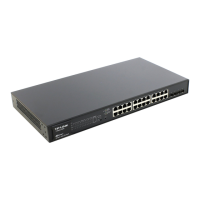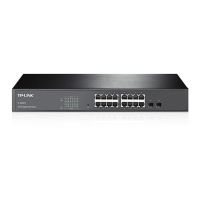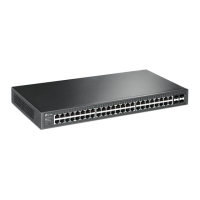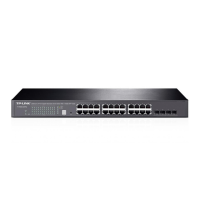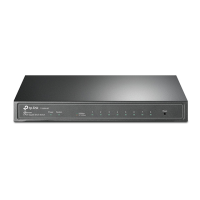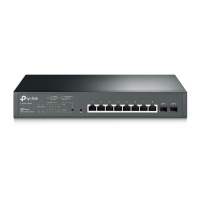Configuration Guide 204
Configuring Spanning Tree Spanning Tree
BPDU
The packets used to generate the spanning tree. The BPDUs (Bridge Protocol Data Unit)
contain a lot of information, like bridge ID, root path cost, port priority and so on. Switches
share these information to help determine the tree topology.
1.2.2 MSTP Concepts
MSTP, compatible with STP and RSTP, has the same basic elements used in STP and RSTP.
Based on the networking topology, this section will introduce some concepts only exist in
MSTP.
Figure 1-3 MSTP Topology
region 1
region 3
region 4
CST
IST
Blocked Port
region 2
MST Region
An MST region consists of multiple interconnected switches. The switches that have the
following characteristics are considered as in the same region:
Same region name
Same revision level
Same VLAN-Instance mapping
MST Instance
The MST instance is a spanning tree running in the MST region. Multiple MST instances can
be established in one MST region and they are independent of each other. As is shown in
Figure 1-4, there are three instances in a region, and each instance has its own root bridge.

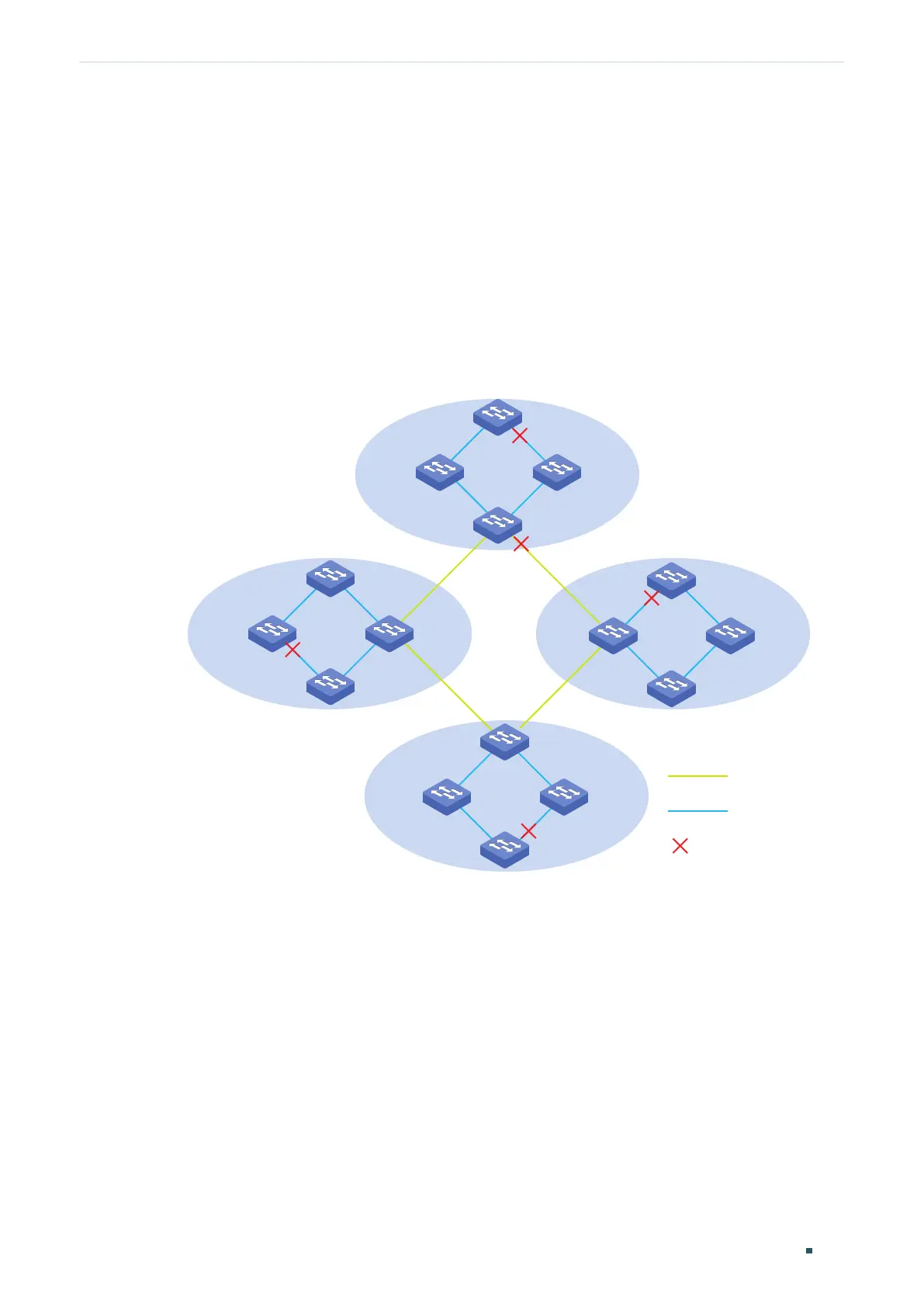